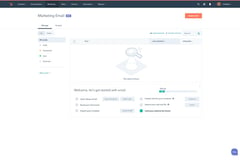Index Content
Free to Play and Freemium are two types of free video games. The term Free means both free and free, so we are talking about "free to play" models. And Freemium is a word made up of Free and Premium. Doesthat mean we can just pick up a video game from the shop and leave without paying? No. These terms apply to online games, where there are also paid modes that, in fact, occupy the vast majority of the market. However, F2P (acronym for Free to Play) games are gaining more and more ground, and we'll explain why.
Origins of F2P
First of all, these forms of distribution could not have arisen in the landscape of "physical" games - those games that were bought in shops and were introduced on consoles that had already been bought previously. It is true that on these consoles there is also the possibility of multiplayer and that, in fact, they are still used. Mobile devices, especially phones and tablets, as well as computers, have been fundamental to the emergence of new forms of play. In addition, of course, to the internet connection.
F2P and Freemium emerged in the late 1990s, as a twist on two previous typologies: Role Play Game (RGP) and Massively Multiplayer Online Game (MMOG). RGP is a type of role-playing game, i.e. a video game in which players transform themselves into pre-created characters and control their actions. They do not participate in the game with their own identity, but as if they were those characters. MMOG comprises those video games that are played simultaneously by hundreds or even thousands of people, online, and usually interact in a virtual world.
Ugur Akdemir via Unslpash
What these two types of games have in common is that they are massive and online. Their creators soon realised that they could exponentially expand the number of players if there was no major barrier to access to the game: the purchase price. So they began to consider the idea of allowing free access to the game, which automatically led to the search for a new source of funding.
Advertising was one of the solutions. Not charging users to play increased the number of players. Online video games thus became a place with hundreds of thousands of people, a succulent space for advertisers, who gladly accepted to place their advertisements and campaigns within the games.
This is, in fact, one of the most widespread modes of financing in the world today. Players do not have to pay to gain access to a site or service but, in return, they will see advertising. At first glance it might seem that they are getting access for free, and they do; but the reality is that, when a purchasing need arises in them that can be satisfied by some of the brands that advertise in the video games where users spend so many hours, these will be the first ones they think of. For them they will already have the connotation of familiarity and will think of them as close and trusted brands.
The most crucial step for players as buyers is to get hooked on the game. And this technique proved to be one of the most useful to achieve this. Once they have already accessed the game for free, they are hooked and are willing to see advertising or have waiting times as the only payment to continue playing. However, if they had paid a price for access, these would probably be reasons to abandon the game and choose another one.
Although this was not the only form of funding they thought of, there was one more, which gave rise to these types of F2P games.
Freemium or Free to Play
Once the user is already hooked on the game, which they have accessed for free, they are offered the possibility of paying for certain things, such as, for example:
- Customise the character
- Obtain weapons, tools and abilities that do not exist in the free model
- Unlock new spaces and levels, some of them exclusive
- Temporary power-ups
- Remove advertising
- Reduce waiting times
Juan Gomez via Unsplash
In short, to improve the conditions of the game. This makes those who want to pay small fees that one by one do not seem like a large amount of money, but that offer them clear advantages when it comes to playing. As some of these games are multiplayer, these advantages are very succulent .
Free to Play has become one of the most successful in the sector, and in Spain it has been a revolution, as our country is the fifth in Europe and tenth in the world in terms of video game consumption
However, when we go deeper into how it works, we realise that it is free, but you can customise your experience by paying, so it can be free, but it doesn't have to be, and everyone can invest the amount of money they want in the game. However, those who pay will have more advantages, which translates into better results in the game. So, is the game really free if it is difficult to win against other players?
This approach, which revolves around the advantage of those who do pay, has led to a new version, Free to Win, a Free to Play modality where you only pay to unlock elements that do not affect the development of the game, without giving advantages. They would affect, above all, the appearance of the players, the game interface, waiting times, advertisements, etc.






